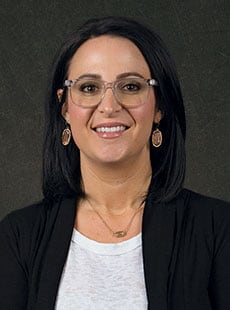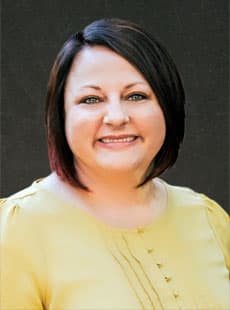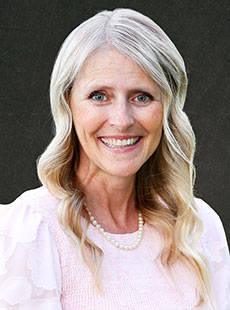 Course Introduction
Course Introduction
Core Standards of the Course
Strand 1
Students will investigate the history, meaning, theory and styles of leadership.
Standard 1
Leadership Theories
-
Great Man Theory: Great leaders are born possessing certain traits that enable them to rise and lead. Great leaders can arise when the need for them is great.
-
Trait Theory: states that leadership qualities can be acquired, however, a good leader has certain characteristics that allow learning the skills to be much easier.
-
Behavioral Theory: focuses on how leaders behave, and assumes that these traits can be copied by other leaders.
-
Contingency/Situational Theory: suggests that a leader's effectiveness is contingent on whether or not their leadership style suits a particular situation
-
Transactional: is based on the idea that leaders give followers something they want in exchange for getting something they want.
-
Transformational: where a leader works with teams to identify needed change, creating a vision to guide the change through inspiration, and executing the change in tandem with committed members of a group.
-
Emerging Leadership Approaches (e.g., Authentic Leadership, Spiritual Leadership, Servant Leadership)
Standard 2
Determine your personal leadership
-
Explore personality test that help identify your key leadership traits some suggestions are Meyers & Briggs, Strengths finder 2.0, Enneagram, 16 personalities, or Have students take a test and evaluate the relationship between personality and leadership.
-
Highlight current business leaders in the 21st century and how they emulate these personality traits.
Strand 2
Leading Organization with Intention - Students will learn the importance and fundamentals of a vision, a mission, and establishing goals that will help to accomplish the over vision and mission of the organization.
Standard 1
Understand the differences of individual perspectives and its effect on the purpose, benefits, and structure of Vision Statement which is a sentence or short paragraph that succinctly describes the goals of a company, nonprofit, or some other entity and a Mission Statement that is used by a company to explain, in simple and concise terms, its purpose(s) for being.
-
Internal and external slogans and taglines should reflect a condensed version of the vision and mission statement. Highlight examples of corporations and organizations that are successful at doing this.
-
Differentiate between the two types of organizational statements and how each is used by organizations.
Standard 2
Explore best strategies to communicate your organization or businesses vision and mission statements to all your stakeholders as an individual or group that has an interest in any decision or activity of an organization. Keeping it where everyone can see it on a wall, in your email signature.
-
Use multiple communication channels
-
Repeat the vision and mission whenever you are meeting as an organization.
-
Create a call out when gathering your organization together
-
Keep it clear and concise
Standard 3
Understand the value of business or organizational goals and the characteristics of a SMART goal.
-
Specific: simple, sensible, and significant
-
Measured: Meaningful and Motivated
-
Achievable: Agreed and Attainable
-
Relevant: reasonable, realistic and resourced, results-based
-
Time Bound: time-based, time limited, time/cost limited, timely, time-sensitive
Standard 4
Discuss in depth the practices of writing SMART goals and emphasize the concepts of Achievable, It should stretch your abilities but still remain possible and Relevant, ensure that your goal matters to you, and that it also aligns with other goals in creating SMART Goals.
-
Provide examples of achievable and relevant goals in a organization
-
Limit the number of goals that you are trying to achieve to an attainable amount, no more than 3 at one time.
-
Create a cycle of effective planning and reporting your goals within the organization
Performance Skill
Apply your understanding of SMART goals to an organization you are a part of by creating 3 SMART goals for yourself to complete.
Strand 3
Organizing Roles & Responsibilities - Students will be able to identify various roles and define the scope of work for each role within an organization.
Standard 1
Evaluate the various leadership positions inside of an organization and define the leadership skills necessary for each role. Explore the 5 levels of leadership to understand that leadership relationships evolve and are also a process to master.

Standard 2
Define the role of leadership in determining the responsibilities of each of the roles within an organization, what job and scope of work does each team member contribute?
-
What directives will they be overseeing
-
Which deliverables will they be accountable for
-
Who will they be asked to manage
Standard 3
Understand the chain of accountability in an organization. Describe how the process of information and communication all ensure that employees know what they should do and who they should report back to.
-
Chain of accountability: dictates who is in charge of whom and of whom permission must be asked.
-
Workflow: execution and automation of business processes: where tasks, information and documents are passed from one person to another for action according to a set of procedural rules.
-
Policies: a principle of action adopted or proposed by a business, or organization
-
Procedures: an established or official way of doing something in a business
-
Flow of information: is the movement of information between people and systems.
-
Analyze an accountability chain of an organization OR
-
Create a information flow chart for an organization
Strand 4
Effective Communication in Leadership - Students will understand effective strategies for communication with all stakeholders of the business or organization.
Standard 1
Students will understand formal and informal rules of communication
-
Examples of when to use formal communication in a work or professional environment
-
Examples of when to use informal communication in a work or professional environment
Standard 2
Students will use effective techniques when communicating with employees or organization members through various communication channels
Standard 3
Understand tools for effective communication when talking to an employee with a concern or when discussing with your direct supervisor a concern.
-
Active listening
-
Empathy and validation
-
Positive language usage and correct grammar
-
No absolutisms: "always" and "never" and avoid saying inflammatory or opinion based comments.
-
Clarify any confusing ideas by asking questions
-
Be respectful in language, tone, and volume level
-
Use eye contact and be sure the person can hear you
-
Do not interrupt or argue
Standard 4
Compare and contrast "I" and "you" messages.
-
Practice public speaking by researching a successful leader and communicating why they inspire you.
-
Lead a group discussion applying all the active listening and communication skills from this Strand.
Strand 5
Business Decision Making - Students will understand the process for making sound decisions and resolving conflicts.
Standard 1
Using Parliamentary Procedure to make decisions
- Treat one subject at a time
- Alternate between opposite points of view in discussion
- Always have the chair tally votes for both sides of the issue
- Maintain decorum in discussion and avoiding personalities in debate
- Confine debate to the merits of the question under discussion (PLI 1995:4).
- Division of a question—members may be for one part of a question and not for another
Learn Robert’s rules for running a board or a presidency meeting
- Ensure the right of the majority
- Protect the rights of the minority
- Defend the rights of individual members
- Safeguard those people absent from the meeting four different types of diversity: internal, external, organizational, and worldview
- Guard all these together
Define and discuss the steps for sound decision making in order.
- Identify the problem
- Generate alternatives
- Select best solution
- Implement solution
Explore the language used in making decisions during formal business meetings. (create a table)
- “I move to postpone”
- “ Move to adjourn the meeting”
- “ I move to propose a vote”
- “ All in favor say I”
- “All opposed say Nay”
Standard 3
Compare and contrast decision making.
-
Students will demonstrate using parley procedure while running a meeting. OR
-
Students will observe a formal business meeting such as a school district meeting, a PTA meeting, A School Land Trust Meeting or other community or city based meetings that are open to the public.
Strand 6
Motivating Employees - Students will understand the nature of motivating employees and members of a business or organization.
Standard 1
Discuss common motivational practices
-
Get to know your employees by spending one on one time with them
-
Learn what their individual motivation is, not everyone is same
-
Ensure they have what they need to be successful
-
Help them develop the skills they desire
-
Include employees in decision making
-
Believe in them and trust their efforts
Standard 2
Describe the use of criticism and praise in motivating employee behaviors.
Standard 3
Delegating
Steps to effective delegation
-
Choose the right person for the task
-
Explain why you are giving them the task
-
Provide instructions and goals for the outcome
-
Provide any needed resources or training
-
Give them the authority to act
-
Check the outcome with provide feedback and gratitude
Strand 7
Diversity and Inclusion in Organizations - Students will identify and understand the nature of diversity within organizations.
Standard 1
Discuss how a leader can encourage diversity within organizations and recognize the benefits of diversity in thoughts, ideas, experiences, race, traditions, philosophies, skills.
Standard 2
Cover the following acts that were created to ensure equal employment opportunity
-
* ADA * ADEA * Equal Pay Act Performance Skill * Find a business or organization that has a mission statement or vision statement that encourages diversity in their organization. OR * Write a diversity and inclusion statement for a specific organization Workplace Skills * Communication * Problem Solving * Teamwork * Critical Thinking * Dependability * Accountability * Legal Requirements/expectations * Data interpretation
-
Describe why it is important for leaders to appreciate diversity.
-
Discuss how affirmative action affects business and industry today.


 UTAH EDUCATION NETWORK
UTAH EDUCATION NETWORK

 Justin
Justin Braxton
Braxton Dani
Dani Kayla
Kayla Katie
Katie Lora
Lora Rob
Rob Val
Val
